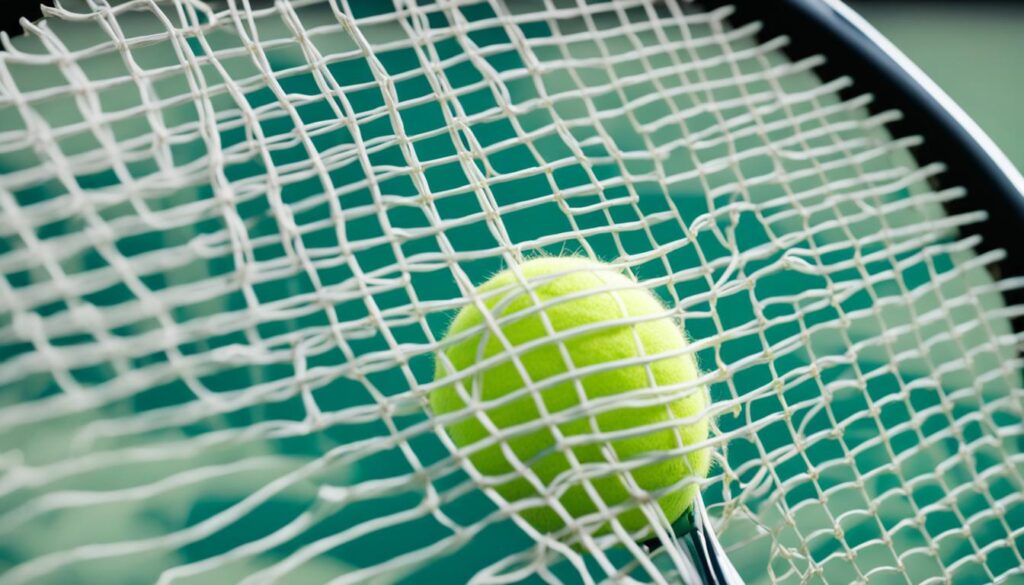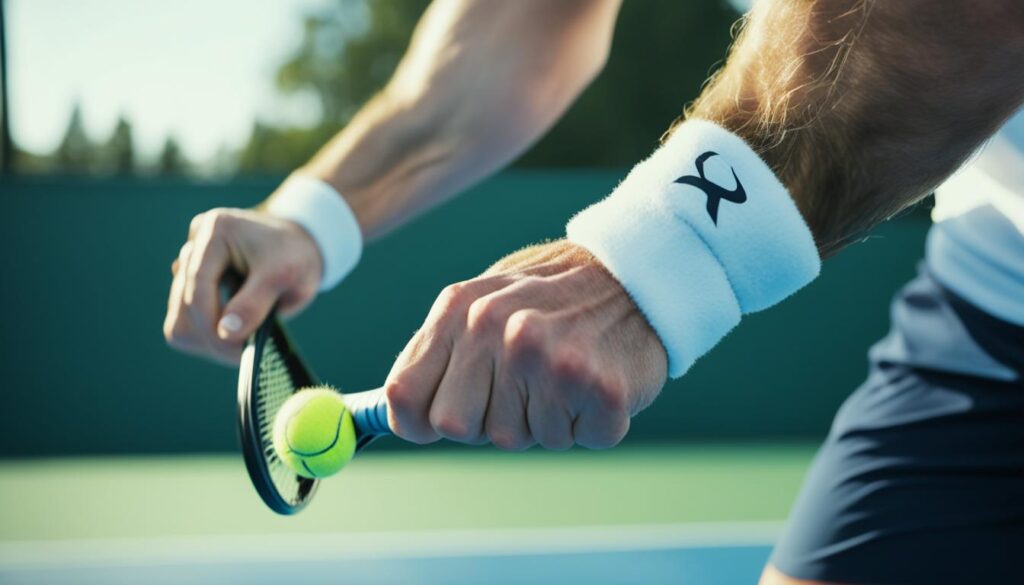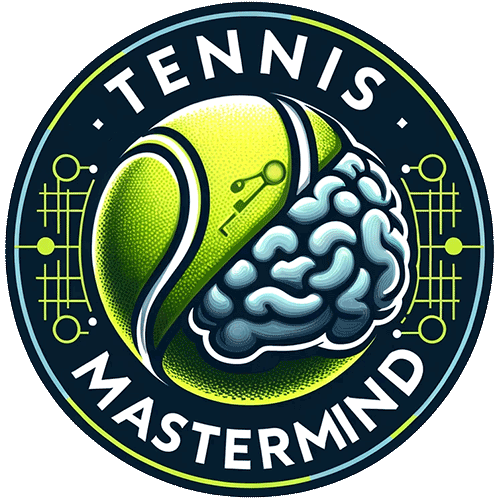Welcome to the exciting world of tennis! If you’re gearing up for your first tennis match, you’re in for an exhilarating experience. However, it’s natural to feel a combination of excitement and nerves. That’s where we come in to guide you every step of the way. In this section, we will provide you with all the essential information to prepare yourself and set realistic expectations for your debut on the court.
Preparing for your first tennis match involves more than just picking up a racket and hitting the ball. It requires a holistic approach that encompasses various aspects such as understanding the rules, acquiring the right equipment, warming up your body, developing a strategy, and mastering the mental game. By focusing on these key areas, you’ll be able to step onto the court with confidence and maximize your chances of success.
Key Takeaways:
- Prepare for your first tennis match by familiarizing yourself with the rules and scoring system.
- Invest in proper tennis equipment and attire to enhance your performance.
- Warm up your muscles with pre-match exercises to prevent injuries.
- Develop a game plan and strategy for your match.
- Manage your nerves and stay mentally focused during the game.
Understanding the Rules and Scoring System
Before stepping onto the court, it’s important to familiarize yourself with the rules and scoring system of tennis. This knowledge will not only ensure fair play but also enhance your overall tennis experience. In this section, we will break down the basic rules and scoring system of tennis, providing you with the essential information you need to navigate your first match with confidence.
The rules of tennis govern the gameplay, ensuring that matches are played fairly and consistently. Familiarizing yourself with these rules will allow you to understand and follow the proper conduct during a tennis match.
Key Tennis Match Rules
- Serving Order: In tennis, the serve alternates between players at the start of each game and after each game is completed. The player whose turn it is to serve is determined by a coin toss or mutual agreement.
- Scoring: Tennis uses a unique scoring system, with points awarded as follows:
- Love (0 points)
- 15 (1 point)
- 30 (2 points)
- 40 (3 points)
- Game (4 points)
- Deuce: When both players or teams have a score of 40, it is called “deuce.” To win the game from deuce, a player or team must win two consecutive points.
- Advantage: If a player or team scores a point after deuce, they gain the advantage. If they win the next point, they win the game. However, if they lose the point, the game goes back to deuce.
- Tiebreak: In some situations, particularly in tournament play, a tiebreaker is used to determine the winner of a set. This is a separate game played to seven points, with the first player or team to reach seven points (with a two-point advantage) winning the tiebreaker and the set.
| Term | Definition |
|---|---|
| Love | The term used to represent 0 points in tennis scoring. |
| Deuce | When both players or teams have a score of 40, it is called “deuce.” To win the game from deuce, a player or team must win two consecutive points. |
| Advantage | If a player or team scores a point after deuce, they gain the advantage. If they win the next point, they win the game. However, if they lose the point, the game goes back to deuce. |
Tennis Equipment and Attire
In order to fully enjoy and excel in the sport of tennis, it’s essential to have the right equipment and attire. Whether you’re a beginner or a seasoned player, having the proper gear can significantly impact your performance on the court.
Tennis Racket
The tennis racket is your most important piece of equipment. It’s essential to choose a racket that suits your playing style and skill level. If you’re a beginner, opt for a lightweight racket with a larger head size, as it offers more power and forgiveness, making it easier to control the ball. Intermediate and advanced players often prefer rackets with greater precision and control.
Remember, selecting the right tennis racket is a personal choice. Visit a local tennis pro shop or consult with a tennis coach to get expert advice tailored to your needs.
Tennis Shoes
Proper footwear is crucial for tennis, as it provides stability, support, and grip on the court. Tennis shoes are specifically designed to withstand the lateral movements and quick directional changes that are common in the sport.
When choosing tennis shoes, prioritize comfort, fit, and durability. Look for shoes with good cushioning and ankle support to prevent injuries. Opt for a pair that suits your playing style, whether you prefer more speed-oriented shoes or ones that provide extra stability and durability.
Tennis Attire
Comfortable and functional clothing is essential for optimal performance on the tennis court. Unlike other sports, tennis has specific attire guidelines, although they may vary depending on the venue and level of play.
For both men and women, wearing a t-shirt or polo shirt with tennis shorts or skirts is common attire. Ensure that your clothing allows for a full range of motion and aids in temperature regulation. Avoid wearing restrictive or uncomfortable clothing that may hinder your movement and distract you from the game.
| Tennis Equipment | Tennis Attire |
|---|---|
| Tennis Racket | Tennis shoes |
| Tennis balls | Tennis-specific clothing (t-shirt, polo, shorts, skirts) |
| Grip tape | Hats or visors |
| Overgrips | Sweatbands |
Remember, wearing appropriate tennis attire not only ensures comfort and ease of movement but also promotes a professional and respectful atmosphere on the court.

Now that you’re equipped with the knowledge of essential tennis equipment and attire, you’re ready to step onto the court with confidence. The right racket, shoes, and clothing will enhance your performance and enjoyment of the game. Stay tuned for the next sections, where we’ll dive deeper into pre-match warm-up exercises and developing a winning match strategy.
Pre-Match Warm-Up Exercises
A proper warm-up is crucial before any physical activity, and tennis is no exception. Engaging in warm-up exercises before your match can help prepare your muscles and prevent injuries. In this section, we will outline a series of pre-match warm-up exercises that will get your body ready for the physical demands of a tennis match.
From stretching to dynamic movements, these exercises will help increase your flexibility, mobility, and overall performance on the court. Incorporating these warm-up exercises into your routine can also enhance your coordination, agility, and reaction time, allowing you to react quickly to fast-paced shots.
- Stretching: Start with some gentle stretching exercises to loosen up your muscles and improve flexibility. Focus on stretching your calves, quadriceps, hamstrings, shoulders, and wrists. Hold each stretch for about 15-30 seconds without bouncing or jerking.
- Dynamic Warm-Up: Follow your stretching routine with some dynamic warm-up exercises. These movements involve active stretching combined with controlled movements to increase blood flow and prepare your muscles for the upcoming match. Some examples include high knees, walking lunges, butt kicks, leg swings, and arm circles.
Remember to listen to your body during the warm-up and adjust the intensity or duration of the exercises as needed. It’s essential to start with easier movements and gradually increase the intensity to avoid any sudden strains or injuries.
“A proper warm-up is like priming the engine before a race – it prepares your body for the challenges ahead. Incorporating pre-match warm-up exercises into your routine can help you perform at your best and reduce the risk of injuries on the tennis court.”
– Tennis Coach Sarah Johnson
By incorporating these tennis warm-up exercises into your routine, you’ll not only enhance your physical performance but also reduce the risk of injuries. Remember to prioritize your warm-up before every match and reap the benefits of a well-prepared body.
| Benefits of Pre-Match Warm-Up Exercises |
|---|
| Increased flexibility and mobility |
| Improved coordination and agility |
| Enhanced reaction time |
| Reduced risk of injuries |
Developing a Match Strategy
Having a game plan is crucial when it comes to maximizing your performance on the tennis court. It gives you a competitive edge and helps you make strategic decisions during the match. In this section, we will explore various match strategies for both singles and doubles play, providing you with valuable insights and techniques to outsmart your opponents. Whether you’re playing singles or doubles, these strategies will elevate your game and increase your chances of success.
Singles Strategy
In singles play, the key to success lies in utilizing the entire court and capitalizing on your strengths. Here are some essential tips for developing a strong singles match strategy:
- Positioning: Position yourself strategically on the court to cover the most ground and create opportunities for winning shots.
- Shot Selection: Choose your shots wisely based on your opponent’s weaknesses and your own strengths. Aim for consistency and accuracy.
- Tactics: Use tactics such as changing the pace, varying shot directions, and employing drop shots to keep your opponent off balance.
To further illustrate effective singles strategy, let’s hear from renowned tennis player Serena Williams:
“In singles, you have to be a tiger – you have to be aggressive. You have to be willing to take risks and go for your shots.” – Serena Williams
Doubles Strategy
In doubles play, teamwork and communication are paramount. Developing a cohesive strategy with your partner can lead to a winning partnership. Here are some tips for crafting an effective doubles match strategy:
- Positioning: Coordinate with your partner to cover as much court as possible. One player should focus on the net, while the other covers the baseline.
- Shot Selection: Opt for shots that create opportunities for your partner to move forward, giving them a chance to be aggressive at the net.
- Tactics: Utilize strategies like lobs, poaching, and cross-court shots to disrupt your opponents’ rhythm and gain the upper hand.
Now, let’s hear from the legendary doubles players, Bob and Mike Bryan:
“In doubles, understanding your partner’s strengths and weaknesses is the key to forming a successful strategy. Communication and trust are essential elements for a winning game plan.” – Bob and Mike Bryan
By implementing these match strategies, both in singles and doubles, you’ll be able to adapt to different playing styles and make strategic decisions that can turn the tide in your favor.
| Singles Strategy | Doubles Strategy |
|---|---|
| Positioning yourself strategically to cover the court effectively. | Coordinating with your partner to cover more court space. |
| Choosing shots based on your opponent’s weaknesses and your strengths. | Selecting shots that give your partner opportunities to move forward. |
| Using tactics like changing pace and employing drop shots. | Utilizing strategies like lobs and poaching to disrupt opponents’ rhythm. |
Mental Preparation and Managing Nerves
Tennis is not just a physical sport; it requires mental resilience as well. The nerves and anxiety that can arise before and during a tennis match can greatly impact your performance on the court. To ensure you stay focused and perform at your best, we have compiled a list of strategies and techniques to help you manage your tennis match nerves. By implementing these mental preparation techniques, you can overcome anxiety and remain calm throughout your first tennis match.
One effective technique for managing nerves is practicing breathing exercises. Deep diaphragmatic breathing can help calm your mind and body, reducing the impact of nervousness. Before stepping onto the court, take a few moments to focus on your breath. Inhale deeply through your nose, feeling your abdomen expand, and exhale slowly through your mouth, releasing any tension. Repeat this process several times to center yourself and promote relaxation.
Positive self-talk is another powerful tool to combat tennis match nerves. During stressful moments in a match, it’s essential to replace negative thoughts with positive affirmations. Instead of telling yourself “I can’t do this,” reframe your mindset by saying “I am capable and prepared.” This shift in self-talk can boost your confidence and keep your focus on the present moment. Trusting in your abilities and maintaining a positive attitude will help you stay mentally strong throughout the match.
“I’ve learned that you can’t control the external factors, but you can control your response to them. Taking a moment to breathe deeply and remind myself of my training helps me stay calm and focused during matches.” – Serena Williams
Visualizing success can also aid in managing tennis match nerves. Take some time before your match to vividly imagine yourself performing well and achieving your desired outcomes. Visualize hitting powerful shots, making accurate serves, and confidently moving around the court. By mentally rehearsing success, you can build confidence and alleviate performance anxiety.
Lastly, it’s important to stay present and focus on the task at hand during a tennis match. Instead of worrying about the outcome or analyzing past mistakes, direct your attention to the current point. By staying present, you can make clear decisions and adapt to the game as it unfolds. Remember, every point is an opportunity to showcase your skills and enjoy the sport you love.

Techniques for Managing Tennis Match Nerves
| Technique | Description |
|---|---|
| Deep Breathing | Practice deep diaphragmatic breathing to promote relaxation and reduce anxiety. |
| Positive Self-Talk | Replace negative thoughts with positive affirmations to boost confidence and maintain a positive mindset. |
| Visualization | Create mental images of success to build confidence and alleviate performance anxiety. |
| Staying Present | Focus on the present moment and the current point to make clear decisions and adapt to the game. |
Tips for On-Court Etiquette
Tennis is a game that values sportsmanship and respect. It’s important to understand and adhere to the etiquette of the sport to create a positive and enjoyable tennis experience for everyone involved. In this section, we will discuss the importance of on-court etiquette, including the proper way to call lines, how to shake hands, and the significance of displaying good sportsmanship towards your opponents.
The Importance of Tennis Match Etiquette
Respecting your opponents and playing with good sportsmanship is not only an essential part of tennis culture but also creates a fair and pleasant environment for everyone. By following these etiquette guidelines, you can enhance your own experience on the court and contribute to a positive atmosphere for all players.
- Call lines accurately: When a ball lands close to a line, it’s crucial to make a fair and honest call. If you’re unsure about the ball’s position, give your opponent the benefit of the doubt. Trust and integrity are key components of a respectful match.
- Shake hands before and after the match: Start and end your match with a handshake, regardless of the outcome. This simple gesture shows respect for your opponent and conveys sportsmanship.
- Avoid excessive celebrations: While it’s natural to feel excited after winning a point, it’s important to remain respectful towards your opponent. Avoid excessive celebrations or taunting, as it can be seen as disrespectful.
- Avoid audible distractions: Keep noise levels to a minimum during play. Avoid talking, shouting, or making unnecessary noise that might disrupt your opponent’s concentration.
- Acknowledge good shots: If your opponent hits an impressive shot, it’s polite to acknowledge it with a nod or a compliment. Recognizing skill and effort shows respect for your opponent’s abilities.
Displaying Good Sportsmanship
In addition to following the specific etiquette guidelines, showing good sportsmanship is an overarching principle that encompasses respect, fair play, and camaraderie. Here are a few tips to display good sportsmanship on the tennis court:
- Stay composed: Regardless of the circumstances, try to remain composed and avoid displaying anger or frustration. Stay focused on the game and maintain a positive attitude.
- Applaud good plays: Show appreciation for outstanding shots and good sportsmanship displayed by your opponent. A simple “well done” or applause can go a long way in fostering a positive playing environment.
- Accept victories graciously: When you win a match, acknowledge your opponent’s effort and congratulate them on a well-played game. It’s important to remain humble and respectful in victory.
- Learn from losses: If you lose a match, take it as an opportunity to learn and improve. Avoid making excuses or blaming others. Instead, focus on the lessons you can take away from the match.
“Sportsmanship for me is when a guy walks off the court and you really can’t tell whether he won or lost, when he carries himself with pride either way.”
-Jim Courier
By following these tennis match etiquette tips and displaying good sportsmanship, you not only contribute to the positive atmosphere of the game but also enhance your own playing experience. Next, we will conclude our comprehensive guide by summarizing the essential elements covered and leave you with a final message to remember as you embark on your tennis journey.
Conclusion
Congratulations on taking the first step towards your tennis journey! As a first-time tennis player, it’s natural to have some expectations and uncertainties about your debut match. However, with the comprehensive guide we’ve provided, you can approach your first tennis match with confidence and a clear mindset.
By following the tips and strategies we’ve outlined, you’ll be well-prepared for the challenges that lay ahead. From understanding the rules and scoring system to selecting the right equipment and attire, we’ve covered all the essentials to ensure a successful match. Remember to stay focused on your game plan and adapt your strategy as needed.
While it’s important to have goals and expectations, also remember to have fun and enjoy the experience. Tennis is a sport that offers both physical and mental challenges, and your debut match is just the beginning of a fulfilling journey. It may take time and practice to refine your skills, but with dedication, you’ll become a more confident player.
As you step onto the court for your first match, keep in mind that tennis is not only about winning or losing, but also about personal growth, sportsmanship, and camaraderie. Embrace the opportunities to learn from your opponents, respect the rules and etiquette of the game, and savor the joy of playing tennis. Your debut match is just the start of a thrilling adventure!




